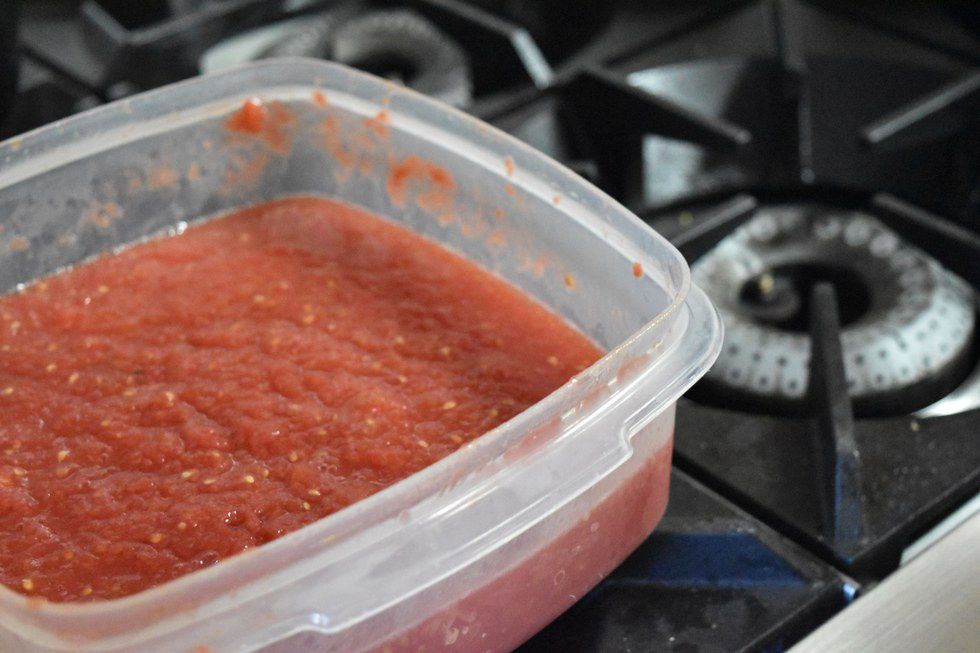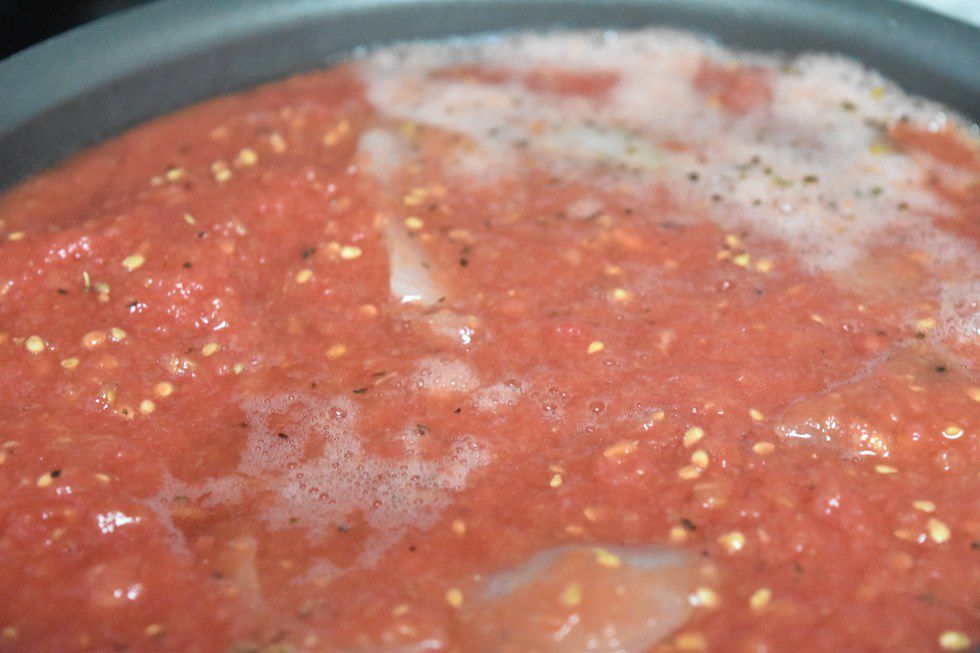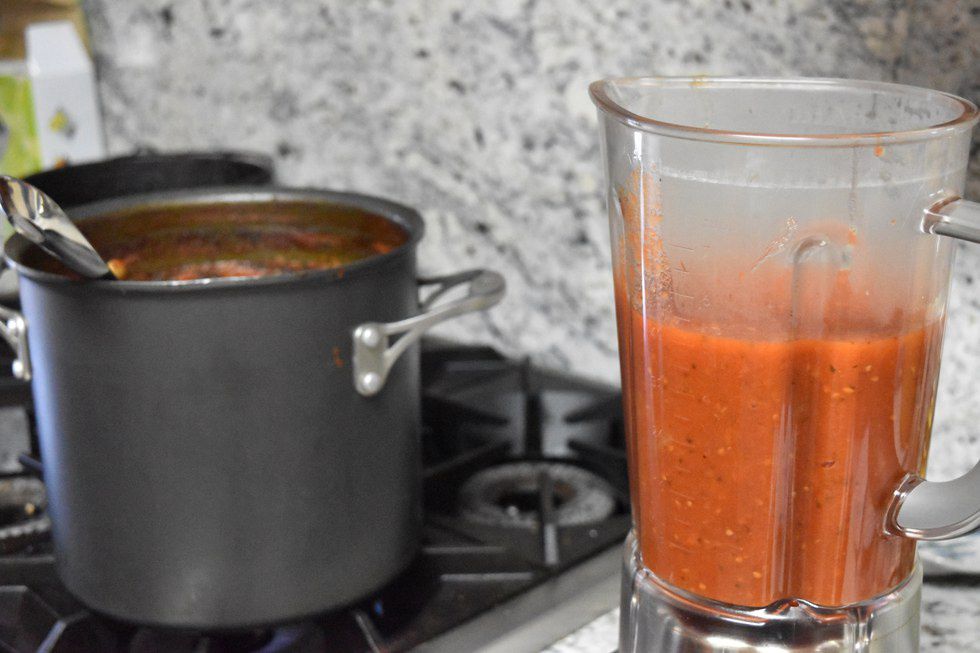Remember that red paste of blended tomato innards? There were a couple gallons of it taking up precious fridge space, reminding me of my time as a fruit-ecutioner. Thanks to a culinary-minded brother, it's been transformed into a great tomato sauce.
For anyone else struggling at the end of the growing season to use up produce, I'm here with tips on Sauce-Making 101.
Since we had a ridiculous amount of sauce tomatoes, we needed a ridiculously large pot to cook the puree in. My brother chose our largest stock pot and made four or five quarts at a time. As long as you scale down the recipe, you could make as little as a quart of sauce.
1. Prepare two large onions.
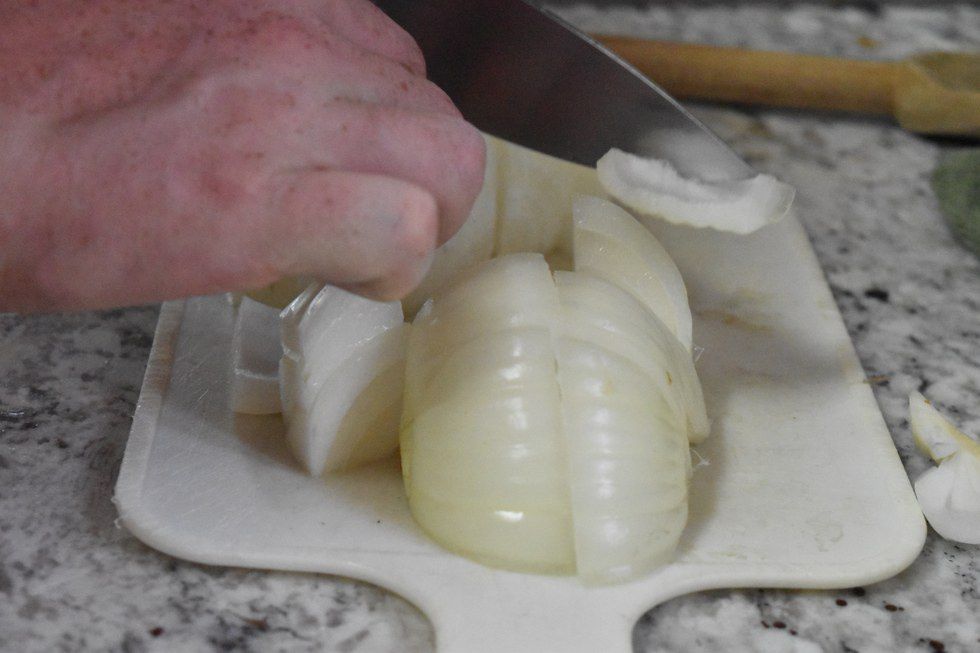
You can pretend to be mourning the death of your garden, but onion is an unavoidable ingredient in a tomato sauce. If you don't want to cry, you can chop the onion into large chunks because their size does not matter in the end.
2. "Sweat" the onions in oil.
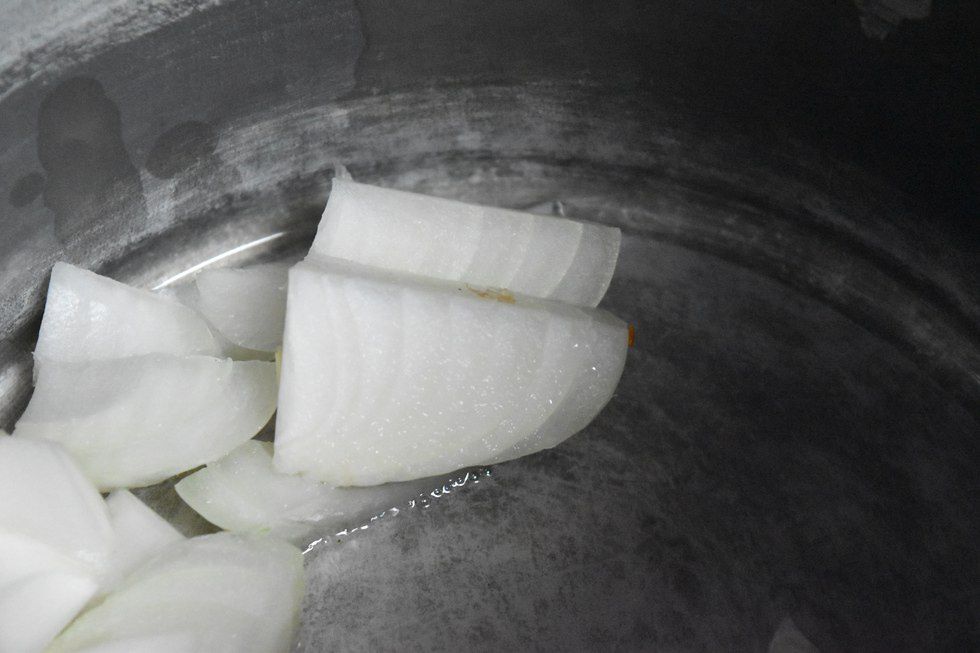
In the bottom of the pot, pour a little oil and put in the onion. You don't want to saute the vegetable and turn it brown, but they should get softer. Pro-Tip: Use any vegetable-based oil, but olive oil or an infused olive oil will have more flavor than canola oil.
3. Spice things up!
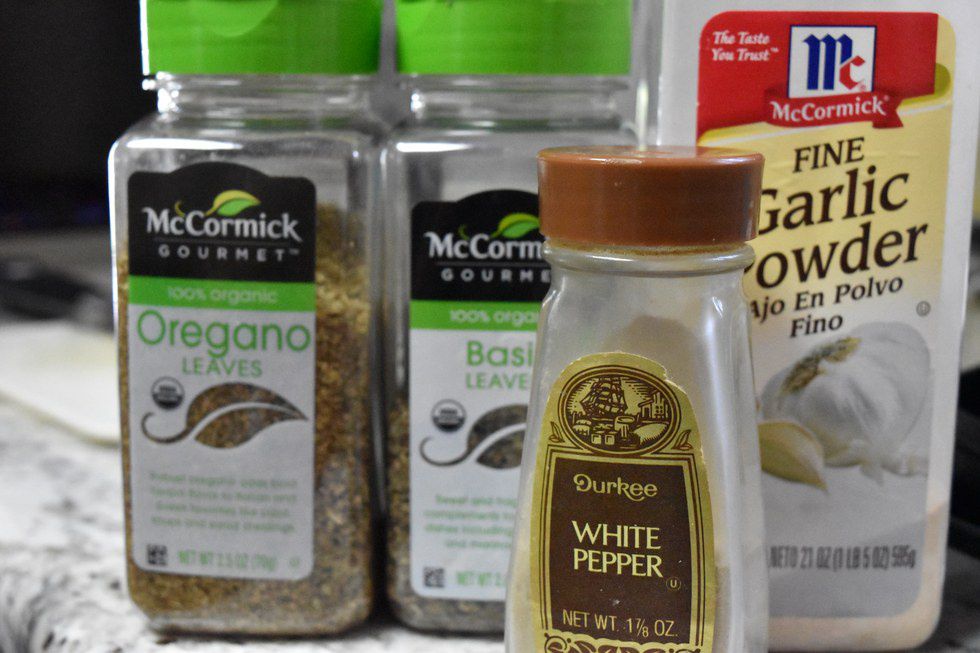
There are five main things to put into a tomato sauce: oregano, basil, garlic powder, white pepper, and (not pictured) sugar. The white pepper has a stronger flavor and is not as visually noticeable as black pepper, which is why it is a better choice if you have it. The garlic powder can be substituted for real garlic, adding the cloves in with the onion. Why sugar? It helps cut down on the natural acidity of the tomatoes. In true chef-like fashion, my brother has no sense of "teaspoons" and "tablespoons". It's all to taste, but less is more - you can add more later.
4. Add the tomato.
No need to wait, you can just add the tomato puree into your spices. If water has separated during refrigeration, add the water anyway because it has a lot of flavor. Give the sauce a few stirs with a wooden spoon and you're almost done.
5. Simmer. Just keep simmering.
Depending on how much tomato you are cooking, you may need to have the stove going for an hour or two. You should see a reduction in volume as the sauce thickens to your liking. If it's too watery, give it some more time. If you make it too thick, just add a little water until you get the right consistency.
6. Make a slightly more appealing smoothie.
Unless you're a fan of onion chunks, you'll need to visit the blender (or immersion blender) again. For the traditional blender, it's as simple as pouring the sauce in and choosing whatever option blends it smoothly. It will be hot, so use a hand-towel over the lid to protect your hands and be careful of steam when you open the lid.
Congratulations! If you made it this far, you've either made or can now make your own tomato sauce. It's one of the five "mother" sauces in cooking and you can change it endlessly to your tastes.
Make a vodka sauce by adding heavy cream and vodka or turn it into a bolognaise sauce by adding some meat (usually ground beef or Italian sausage). Play with spices that pair well like ground ginger or parsley. Try adding celery or carrots and changing sugar amounts for a healthier alternative.
That's the beauty of home-made cuisine - it's all yours to create however you like. Once you try it, there's no going back to Ragu or Prego...even if you have to manage your own backyard garden.




